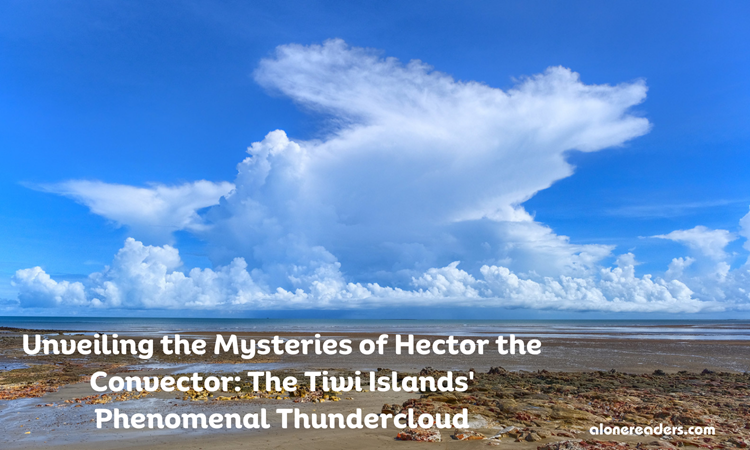
In the warm waters of the Timor Sea, just off the northern coast of Australia, the Tiwi Islands lie as a cluster of remote landmasses that are the stage for one of nature's most predictable atmospheric performances. Each year, between September and March, the islands host a magnificent and almost clockwork meteorological phenomenon known as Hector the Convector. This thundercloud, forming reliably around 3:00 PM, has not only become a local legend but also a subject of intense scientific study.
The phenomenon of Hector can be traced back to the unique geographic and climatic conditions prevalent in the Tiwi Islands. The islands are situated where the sea breezes from different directions converge, aided by the islands' topography. As the morning sun heats the ocean, the rising warm air meets the cooler sea breezes, resulting in condensation and the gradual formation of a thundercloud. By the afternoon, this cloud matures into a colossal tower of power, reaching altitudes where the troposphere kisses the stratosphere.
For decades, Hector has been more than just a weather event for the locals; it has been a beacon for navigation and timing. Sailors and pilots have used the predictable nature of this cloud as a natural waypoint for navigation. It has also served as an informal timekeeper, signalling the late afternoon on the islands with its punctual appearance.
Despite its regularity, Hector remains an enigma to meteorologists and atmospheric scientists. The cloud's formation is undoubtedly tied to the daily sea breezes and the islands' terrain, which includes Bathurst and Melville—Australia's second and third-largest islands, respectively. However, the precise mechanisms behind its consistency and intensity are still being researched.
Research has been focused on understanding the thermodynamic conditions that lead to the cloud's development. Scientists have deployed various tools, such as weather balloons, radar technology, and satellites, to study the cloud's structure and life cycle. The data gathered has been instrumental in improving weather prediction models and understanding convective cloud systems more broadly.
The ongoing fascination with Hector promises a future where more of its secrets are unveiled. Climate change poses new questions about the behavior of such phenomena. Will Hector continue to form with the same regularity and intensity in a warming world? What can this cloud teach us about larger-scale weather patterns and the future of regional climate?
The answers lie in continued observation and advanced modeling techniques. By peering into the heart of Hector, scientists hope to gain insights applicable to global meteorological phenomena. It's a quest not just for academic fulfillment but also for practical solutions to weather prediction and climate adaptation.
As research into Hector the Convector continues, so does the cloud's daily dance above the Tiwi Islands. It stands as a reminder of nature's capacity to awe and inspire, and of the many mysteries that still float, undiscovered, in the skies above us.